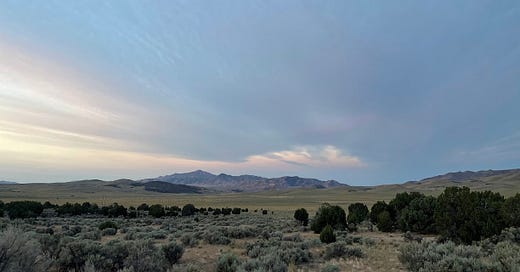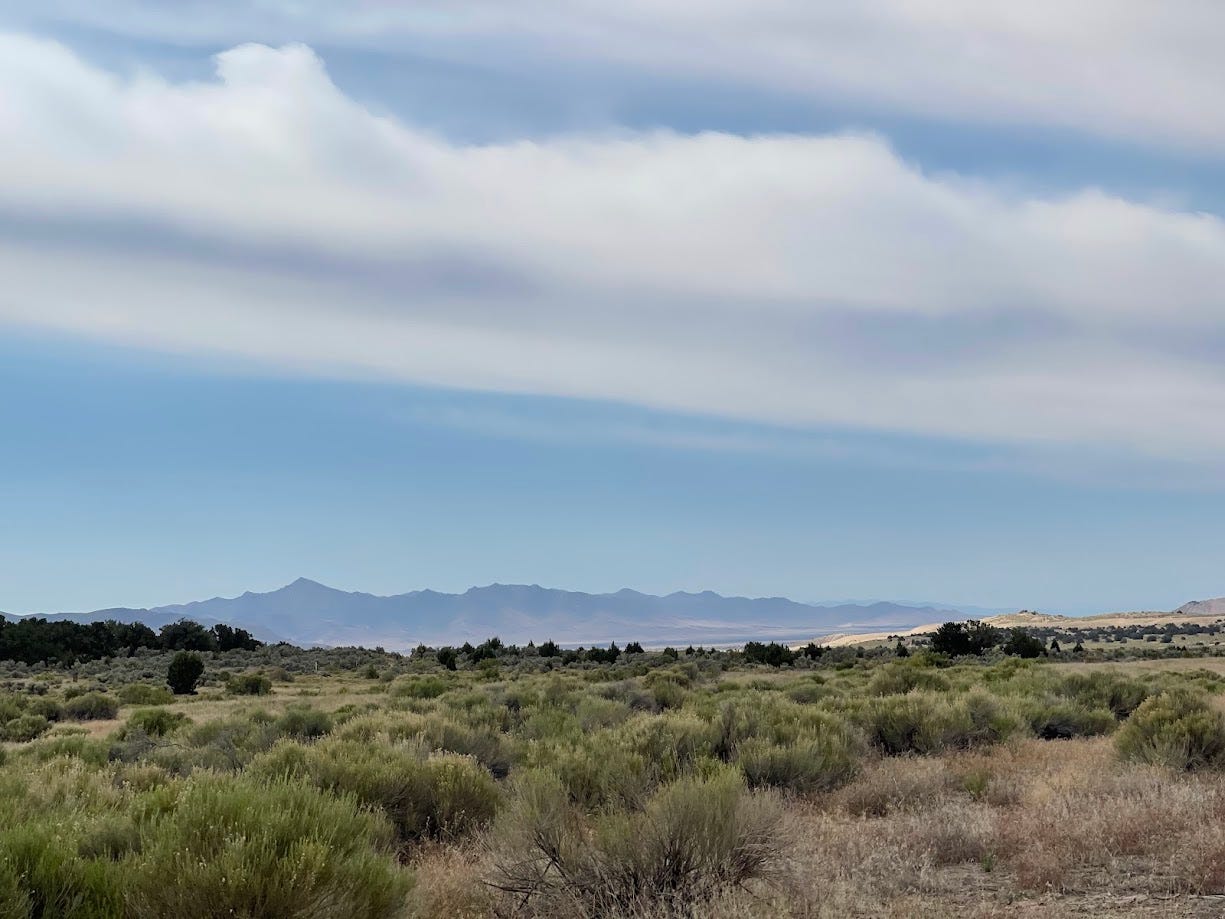We all had ourselves a chill vibes Log Cabin Sunday and I couldn’t have asked for different. My only regret is that I spent it with a cold. Life persists and so does Howie.
It was nice taking a day off from the cycle. When I turned off my phone at midnight on Saturday, it looked like we were starting a war. By Monday I think there had been 7-8 ceasefires declared and broken. Our federal lands were proposed for sale. The same ones I’ve spent the better part of my life exploring, climbing, hiking, and birding. The picture is a little rosier now, but we’ve got a lot of fight left to fight and hopefully fight left in us to fight it with.
I think everything I could have said about this has been said by now. We know it’s not about affordable housing, because if it were, that would be part of the bill. We know it’s not about easing management strain on our federal agencies because some of these parcels are isolated pocket surrounded by development. Because if that were really the problem, the proposal would be to trade those lands for something that does help with the agencies’ management goals.
This is all part of a long-standing campaign to remove all federal ownership of lands in Utah and in the west. Mike Lee proposed something similar in 2018, calling it the New Homestead Act. Last year Utah sued for the turnover of 18 million acres of BLM land. And there is a 2 million dollar media campaign (paid for by taxpayers) set to run for the next 4 years trying to change Utahn’s overwhelming support for public lands managed by the Bureau of Land Management, US Forest Service, and other federal land management agencies.
I’ve been heartened to see how much support public lands have gotten. And I hope it sends some messages that this remains deeply unpopular. But I also worry that our tendency to so quickly pivot to a new news item of the day means that the people determined to make this happen, who cannot be swayed by a new headline or crisis, will keep working on this.
I think that lands currently owned by Utah can be managed well, but it’s a tiny amount compared to what is under the public ownership and managed by federal agencies. Our state parks are lovely and our wildlife management areas are passionately managed by incredible people who I know spend every hour of their professional lives trying to make them better. But even those are expensive to manage properly and everyone is stretched thin. The main funding resource for managing wildlife habitat is hunting permits, and the percentage of Utahns who hunt is on a constant decline. While outdoor recreation is exploding in popularity, no state has figured out how to turn that into a financial guarantee for future management.
I don’t believe that the dozens if not hundreds of thousands of acres being sought would remain in state hands for long. Because Lee himself doesn’t even pretend that state ownership is the ultimate goal.
"Just imagine what opening this land up would do for young entrepreneurs, or to attract existing businesses to create new jobs. How many schools, churches, hospitals, medical research centers, innovation hubs and affordable homes could we build even on just a fraction of this land?" Lee said.
The unfortunate thing is that I can imagine this. It’s easy. I can readily imagine wildlife habitat becoming more data centers to fuel more AI and surveillance because I’ve seen it happen first-hand. Or fossil-fuel burning energy plants like the ones xAI has installed in Memphis. A city’s worth of methane fuel being burned without permits so that Elon Musk can fight with his AI model for being too liberal.
I spent Monday doing my annual breeding bird survey through BLM land, and it was as ideal a morning as I could have cooked up. I was a little stuffy and loopy from the sudafed, but I saw and heard a lot of birds and my soul was filled by that open space and sagebrush smell. I don’t want to imagine innovation hubs here. The mountain bluebirds singing to one another imagine raising their young amid these junipers, and that hope is infectious.
As for my phone-free Sunday, I listened to Jim Croce’s Life and Times on the turntable, and The Cure’s Show. I read most of Sarah Wynn-Williams’s book Careless People (speaking about billions of dollars on tech infrastructure wasted).




